Yes, it's power monitoring madness here at the factory. It all started with an Owl.
Also known as an Electrisave. This gives a scary continuous readout of the instantaneous mains power usage of your house (or an approximation since power factor isn't taken into account). This lead to some interest in where the power was going and attempts to measure every individual appliance using a plug-in power meter. Which quickly gets boring if you have to move the furniture.
Then came the new version Current Cost unit, which promises to provide continuous monitoring results to a remote computer once I get round to making my own serial cable and getting a networked serial server up and running.
And then I finally got round to fitting my new Idratek ODI unit. This partners nicely with the modern electricity meter the nice man came and fitted, since it has a flashing light on the front. I found it was very easy to interface to this by connecting a photodiode across the ODI digital input and embedding the diode in a custom made semi-opaque retention mechanism (a blob of White-Tack).
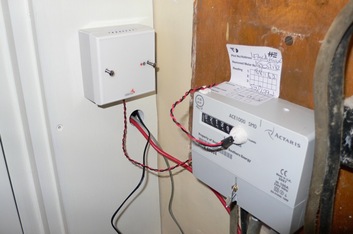
And yes, they all give different readings. The Idratek one is probably most accurate over the medium term, since it is using the electricity meter by proxy, which means power factor is taken into account, although it will potentially drop a reading if Cortex is restarted (eg for program update).
Here's the Cortex config panel. You can use any of the modules supporting pulse counting, and then just add a pulse count meter object to the digital input being used. As you can see, this object not only supports the interpretation of pulse counts from power meters, but also volumemetric flow meters and distance meters. My meter says 800imp/kWHr on the front, so that is the magic number. The cost is a somewhat arbitrary estimate, since, like most tariffs, mine has two rates (primary and secondary) as a fiddle to pretend there is no standing charge. The meter sample period is how often Cortex will read the accumulated count from the module. This setting is a balance between bus traffic, refresh rate and maximum power consumption, since the module counter could overflow if the duration is too long.The graphing features are similar to all the other graphed output like temperature and humidity. You can select a time range to graph and zoom into a period by dragging a selection box on the graph area. You have also got the ability to set various thresholds (including crossing directions and hysteresis) and trigger actions from them.
This madness of three monitoring devices cannot continue. The Owl/Electrisave has a better design of clamp, but least functionality, so I think that's going to my father-in-law. I quite like the CCL display, but I can forward the measurements from Cortex to various display devices, so it's rather superfluous. I think it's heading towards eBay.
And does continuous monitoring help reduce power consumption? In a heavily HA'd house it can be quite difficult to find reduction opportunities, but it did encourage me to defrost the freezer. It will be interesting to see what combined data analyses will reveal.
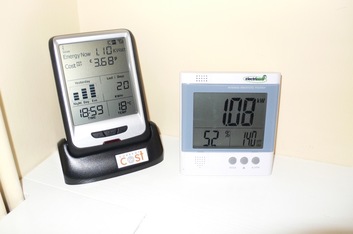
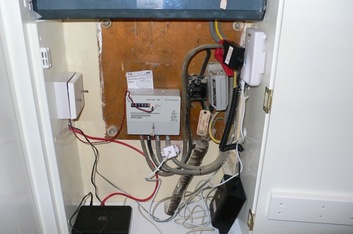
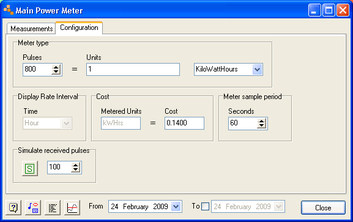
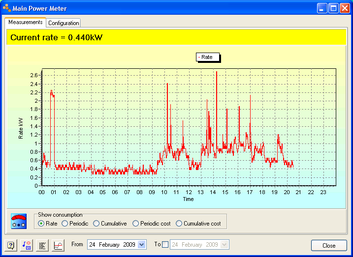

Hi, was there a large difference with the readings between the two methods, & could the CT from the current cost be wired into the Idratek ODI unit for measuring individual circuits?.
Cheers.
The ODI is digital, the Current Cost CT is an analog device requiring sensing electronics. Potentially you could use an analog input module and an amplifier. But to be honest, if your electric meter has a pulse output, either electrical or an LED it's worth using the ODI because the electricity meter handles power factor correctly. A purely CT based method will not be able to factor in PF and hence will be erroneous.
I haven't run a long term comparison, really I need to sort out some logging for the CurrentCost device to do that. But I do get the feeling that the CC tends to over-read a bit.
For individual circuit monitoring there is a long discussion thread here:
http://www.automatedhome.co.uk/vbulletin/showthread.php?t=1699
Basically we plan to use 1-module width energy meters which have a pulsed output compatible with the ODI. These should be nearly as accurate as an electricity meter (purchased without calibration) since they measure voltage and current, but can be wired in to monitor individual circuits.